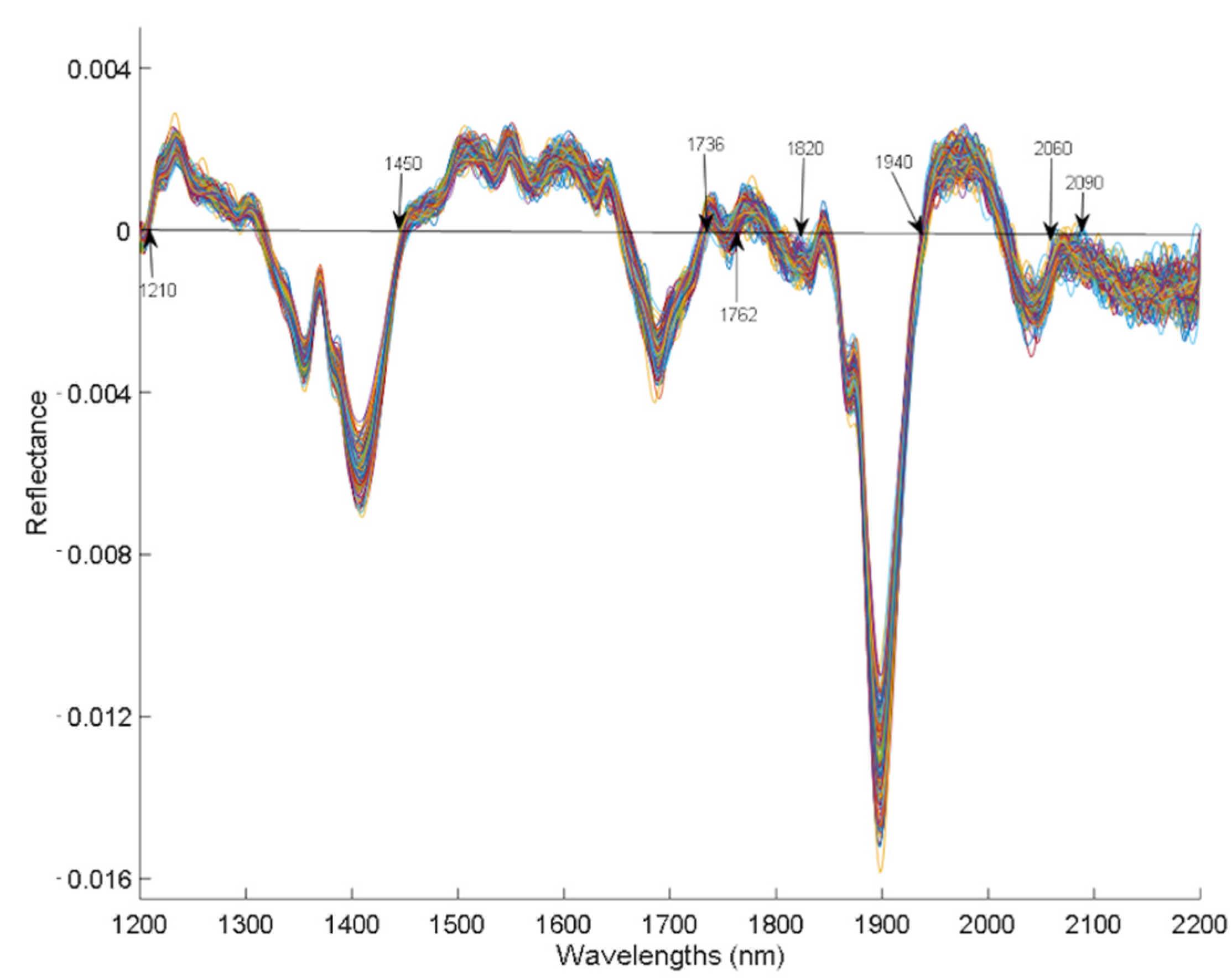Difference between revisions of "Template:Article of the month"
From CannaQAWiki
Jump to navigationJump to searchShawndouglas (talk | contribs) |
Shawndouglas (talk | contribs) (Updated article of the month text.) |
||
| Line 1: | Line 1: | ||
<div style="float: left; margin: 0.5em 0.9em 0.4em 0em;">[[File: | <div style="float: left; margin: 0.5em 0.9em 0.4em 0em;">[[File:Fig3 Jarén Agronomy22 12-4.png|240px]]</div> | ||
'''"[[Journal:Cannabis sativa | '''"[[Journal:Potential of NIRS technology for the determination of cannabinoid content in industrial hemp (Cannabis sativa L.)|Potential of NIRS technology for the determination of cannabinoid content in industrial hemp (''Cannabis sativa'' L.)]]"''' | ||
[[ | Industrial [[hemp]] (''[[Cannabis sativa]]'' L.) is a plant native to Asia and is considered to be a primary source of food, textile fiber, and medicines. It is characterized by containing minimal concentrations of [[Tetrahydrocannabinol|Δ<sup>9</sup>-tetrahydrocannabinol]] (THC), which is the main [[Psychoactive drug|psychoactive chemical]] component, and [[cannabidiol]] (CBD), a non-psychoactive substance. In most European countries, the maximum concentration legally allowed for cultivation is 0.2% of THC, and it is currently under debate whether to increase this level to 0.3%. Moreover, in many countries its production is being regulated and legalized, increasing the need for a rapid analysis method ... ('''[[Potential of NIRS technology for the determination of cannabinoid content in industrial hemp (Cannabis sativa L.)|Full article...]]''')<br /> | ||
<br /> | <br /> | ||
''Recently featured'': | ''Recently featured'': | ||
: ▪ [[Journal:Cannabis sativa research trends, challenges, and new-age perspectives|Cannabis sativa research trends, challenges, and new-age perspectives]] | |||
: ▪ [[Journal:Does cannabis extract obtained from cannabis flowers with maximum allowed residual level of aflatoxins and ochratoxin A have an impact on human safety and health?|Does cannabis extract obtained from cannabis flowers with maximum allowed residual level of aflatoxins and ochratoxin A have an impact on human safety and health?]] | : ▪ [[Journal:Does cannabis extract obtained from cannabis flowers with maximum allowed residual level of aflatoxins and ochratoxin A have an impact on human safety and health?|Does cannabis extract obtained from cannabis flowers with maximum allowed residual level of aflatoxins and ochratoxin A have an impact on human safety and health?]] | ||
: ▪ [[Journal:Delta-8-THC: Delta-9-THC’s nicer younger sibling?|Delta-8-THC: Delta-9-THC’s nicer younger sibling?]] | : ▪ [[Journal:Delta-8-THC: Delta-9-THC’s nicer younger sibling?|Delta-8-THC: Delta-9-THC’s nicer younger sibling?]] | ||
Revision as of 15:58, 30 May 2022
Industrial hemp (Cannabis sativa L.) is a plant native to Asia and is considered to be a primary source of food, textile fiber, and medicines. It is characterized by containing minimal concentrations of Δ9-tetrahydrocannabinol (THC), which is the main psychoactive chemical component, and cannabidiol (CBD), a non-psychoactive substance. In most European countries, the maximum concentration legally allowed for cultivation is 0.2% of THC, and it is currently under debate whether to increase this level to 0.3%. Moreover, in many countries its production is being regulated and legalized, increasing the need for a rapid analysis method ... (Full article...)
Recently featured:
